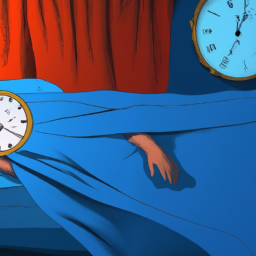Dream Meaning
What Does It Mean If Your Dreams Feel Real

Have you ever experienced a dream that seemed so real? A kind where upon awakening, you’re left wondering if it truly occurred or if it was merely a creation of your mind? I have, and let me say, it’s an odd sensation.
It’s like trying to distinguish between a painting and a photograph – they both look real, but one is a creation of the mind.
Dreams that feel real are quite common, yet many people don’t fully understand their significance. Personally, I’ve always been fascinated by the messages and symbolism within my vivid dreams.
Whether they are a reflection of my subconscious mind or a prophetic glimpse into the future, I believe they hold valuable insights that can help guide us in our waking lives.
So, let’s dive into the world of dreams and explore what it means when they feel all too real.
Key Takeaways
- Vivid dreams can feel very realistic and sensory, and are influenced by emotions and external stimuli.
- The brain processes information differently during REM sleep, leading to vivid dreams that can evoke strong emotions and help process memories.
- Common themes in vivid dreams include flying, falling, being chased, or intense emotions, and they can be symbolic of our experiences and emotions in waking life.
- Techniques for enhancing dream vividness, such as keeping a dream journal, reality checks, and lucid dreaming, can help us gain insights into ourselves and promote personal growth.
Understanding Dreams
Dreams can be confusing, but understanding them can be exciting! They’re a series of thoughts, images, and sensations that occur in the mind during sleep. They can be influenced by our memories, experiences, emotions, and even our subconscious desires. Dreams can be vivid, bizarre, or ordinary, and they can be difficult to interpret.
One theory about dreams is that they’re the brain’s way of processing and consolidating information. During sleep, the brain organizes and stores memories, emotions, and experiences from the day. This process can sometimes lead to vivid dreams that feel real.
These dreams can be so intense that they can cause us to wake up feeling disoriented or emotionally charged. But what does it mean if your dreams feel real?
What are Dreams That Feel Real?
I’ve always been fascinated by dreams that feel real. It’s incredible how vivid and lifelike they can seem, almost as if I’m experiencing them in real life.
In this section, we’ll explore the characteristics of these types of dreams and the science behind why they feel so realistic.
Characteristics of vivid dreams
When you wake up feeling like you’ve just experienced a wild adventure, it’s a sign that your mind conjured up some pretty vivid dreamscapes. Vivid dreams are those that feel incredibly realistic, almost as if you were living through them in real life. They often involve detailed sensory experiences, with sights, sounds, smells, and even physical sensations that feel genuine.
Some of the characteristics of vivid dreams include heightened emotions, increased realism, and greater complexity. In these dreams, you may find yourself fully immersed in a different world, with a clear sense of place and time. You might encounter people you know, or even those you’ve never met before, and experience conversations and interactions that feel genuine and meaningful.
All of these elements combine to create a dream that feels so real, it can be hard to shake off even after you wake up. Understanding the science behind vivid dreams can help shed some light on why they happen, and what they might mean for your waking life.
The science behind vivid dreams
Get ready to dive into the fascinating world of vivid dreams and discover the scientific explanation behind why our minds conjure up such incredibly realistic experiences while we sleep.
The science behind vivid dreams is a complex and fascinating topic that has been studied for decades. One theory is that the brain processes information differently during REM (Rapid Eye Movement) sleep, the stage of sleep where most vivid dreaming occurs.
During REM sleep, the brain becomes more active, while the body becomes paralyzed, which allows the brain to create vivid and immersive dream experiences. Another theory is that vivid dreams are a way for the brain to process emotions and memories.
During the day, we experience a wide range of emotions and events, and our brains need time to process and make sense of them. Vivid dreams may be a way for the brain to categorize and store these experiences, helping us to better understand our emotions and experiences when we wake up.
Understanding the science behind vivid dreams can help us appreciate the incredible abilities of the human brain. Now, let’s explore common themes in vivid dreams.
Common Themes in Vivid Dreams
Typical themes in vivid dreams often include flying, falling, being chased, or experiencing intense emotions. These themes are common because they are all related to our deepest fears and desires.
For example, flying dreams often represent a desire for freedom or the ability to rise above a situation. Falling dreams, on the other hand, often represent a loss of control or a fear of failure.
The intensity of emotions in vivid dreams can also be a common theme. Dreams can evoke powerful emotions such as fear, sadness, joy, or anger, and these emotions can feel just as real as they do in waking life. In fact, some people may even wake up feeling emotionally drained or overwhelmed by a particularly vivid dream.
Understanding the role of emotions in vivid dreams can help us better understand ourselves and our deepest fears and desires.
The Role of Emotions in Vivid Dreams
Experiencing intense emotions in vivid dreams can be a truly overwhelming and unforgettable experience. I’ve had dreams where I felt extreme fear, sadness, anger, and even joy. These emotions can feel just as real as they do in waking life, and can linger long after I wake up.
It’s amazing how the brain can create such vivid and detailed scenarios that evoke such strong emotions. But what causes dreams that feel real? There are several factors that can contribute to the intensity of a dream, such as stress, anxiety, and certain medications.
Additionally, the brain’s processing of emotions during sleep can enhance the emotional intensity of a dream. It’s fascinating to explore the various elements that can make a dream feel so vivid and real.
What Causes Dreams That Feel Real?
As I mentioned earlier, emotions play a significant role in the vividness of our dreams. However, there are other factors at play as well.
Have you ever had a dream that felt so real that you woke up questioning whether it actually happened? This can happen for a variety of reasons and is often linked to the level of brain activity during sleep.
When we enter the rapid eye movement (REM) stage of sleep, our brain becomes highly active and is essentially creating a movie in our mind. This activity can be so intense that it can cause our brain to create a dream that feels real.
Additionally, external stimuli such as noise or light can also impact our dreams and make them feel more lifelike.
Our brain activity during REM sleep plays a significant role in creating vivid dreams. External stimuli such as noise or light can also impact the intensity of our dreams. Dreams that feel real can be caused by a combination of these factors.
Now, let’s move on to the next topic and explore the symbolism of vivid dreams.
The Symbolism of Vivid Dreams
Let’s explore the symbolism of vivid dreams and how they can provide insight into your subconscious thoughts and emotions.
Vivid dreams are often full of symbolism, representing different aspects of your life, experiences, and emotions. For example, dreaming of a snake can symbolize fear or danger, while dreaming of flying can symbolize freedom or a desire for escape. These symbols can help you understand your deeper feelings and desires, even if you may not be consciously aware of them.
Furthermore, vivid dreams can also provide a form of self-reflection. They allow you to explore different scenarios and emotions without the consequences of real life. This can be a powerful tool for personal growth and understanding.
By analyzing the symbols and themes within your dreams, you can gain a better understanding of your innermost thoughts and feelings. Understanding the symbolism of vivid dreams can ultimately lead to a greater understanding and acceptance of oneself.
The Significance of Vivid Dreams
You can’t help but feel a sense of wonder and awe at the significance of your vivid dreams, as they offer a glimpse into the mysterious workings of your subconscious mind. When your dreams feel real, it’s an indication that your mind is trying to convey a message to you, or perhaps help you process unresolved emotions or experiences.
These dreams can be incredibly powerful, and can leave a lasting impact on your waking life. The significance of vivid dreams lies in their ability to provide insights into aspects of ourselves that we may not be aware of in our waking state. By paying attention to the symbols, emotions, and themes that arise in our dreams, we can gain a deeper understanding of our inner world and the forces that shape our thoughts and actions.
In the next section, we’ll explore some techniques for enhancing dream vividness, so that you can tap into this powerful source of self-discovery even more fully.
Techniques for Enhancing Dream Vividness
There are various techniques to enhance the vividness of your dreams, such as keeping a dream journal, practicing reality checks during the day, and using supplements like melatonin or vitamin B6. But have you ever considered incorporating lucid dreaming techniques into your routine to take control of your dreams and explore your subconscious mind on a deeper level?
Here are four simple techniques for inducing lucid dreams:
1) Reality checks: question your reality throughout the day by asking yourself if you’re dreaming, and perform a reality check like checking the time or counting your fingers.
2) Mnemonic Induction of Lucid Dreams (MILD): before falling asleep, repeat a phrase like ‘I’ll remember that I’m dreaming’ while visualizing yourself becoming lucid in a dream.
3) Wake-Initiated Lucid Dreams (WILD): wake up after 5-6 hours of sleep, stay awake for 30-60 minutes, then return to sleep while maintaining awareness as your body falls asleep.
4) Dream-initiated Lucid Dreams (DILD): recognize dream signs such as unusual occurrences or recurring themes, and use them as a cue to become lucid.
Lucid dreaming can be a powerful tool for exploring your inner psyche, but it’s important to remember that not all dreams are pleasant.
In the next section, we’ll discuss coping with nightmares.
Coping with Nightmares
Coping with nightmares can be challenging, but it’s important to understand that they can provide valuable insights into our subconscious fears and anxieties.
When I have a nightmare, I try to take a moment to reflect on what may have triggered it. Was it something I watched before bed? Something I ate? Or is it a recurring theme in my dreams? Understanding the root cause of my nightmares can help me address the underlying issues and potentially prevent them from happening again in the future.
Another technique I use to cope with nightmares is to create a sense of safety before going to bed. This could mean sleeping with a night light or a favorite stuffed animal, or simply doing something calming and relaxing before bed, like taking a warm bath or practicing deep breathing exercises.
When I do have a nightmare, I try to remind myself that it’s not real and that I am safe. This can be difficult in the moment, but with practice, it becomes easier to calm my mind and ease my anxiety.
Frequently Asked Questions
Can vivid dreams actually affect your mental health?
Yes, vivid dreams can affect mental health. They can cause anxiety, depression, and even lead to sleep disorders. It’s important to address any persistent or disturbing dream patterns with a healthcare professional.
Are there any physical factors that may contribute to vivid dreams?
Physical factors such as medication, alcohol, and sleep disorders can contribute to vivid dreams. Stress and anxiety can also play a role. These factors may make dreams feel more real and intense.
Can you control the content of your vivid dreams?
Yes, I can control the content of my vivid dreams by practicing lucid dreaming techniques. With awareness and intention, I can shape my dream environment and actions, leading to more positive and fulfilling experiences.
Do certain medications or substances affect the vividness of dreams?
Taking certain medications or substances can enhance or diminish the vividness of dreams. For example, antidepressants can suppress dream activity, while nicotine and alcohol can lead to more intense and memorable dreams.
Is there a difference between vivid dreams and lucid dreams?
Yes, there is a difference between vivid dreams and lucid dreams. Vivid dreams are intense and lifelike while lucid dreams involve being aware that you are dreaming and having some control over the dream.
Conclusion
In conclusion, I’ve come to realize that dreaming is a complex and fascinating phenomenon that can reveal much about ourselves and the world around us.
Dreams that feel real are a common experience that can be both exhilarating and terrifying. While there’s no universal explanation for why we have vivid dreams, there are certain recurring themes and symbols that can help us understand their meaning.
Some experts believe that dreams are a way for our subconscious mind to process emotions, memories, and experiences. Others argue that dreams are simply random firings of neurons in the brain.
Regardless of the scientific explanation, I’ve found that paying attention to my dreams and exploring their symbolism has helped me gain insights into my own psyche and the challenges I face in my waking life.
So, go ahead and embrace your dreams – even the ones that feel a bit too real. Who knows, they might just reveal something profound about yourself and your world.
Eislyn is a gifted writer whose words weave enchanting narratives within the realm of dreams. With a profound love for storytelling and a deep curiosity about dreams, Eislyn’s articles transport readers into vivid dreamscapes.
Her writing style is both eloquent and thought-provoking, captivating readers’ imaginations and inspiring them to dive deeper into the mysteries of their own dreams. Eislyn’s exploration of dream symbolism and interpretation adds depth and nuance to our content, making it an absolute pleasure for dream enthusiasts to engage with.
Dream Meaning
Where Dreams Have No End Wine

Did you realize that the average American consumes approximately two glasses of wine each week? While it may seem like a considerable amount, for those who are passionate about wine like myself, it’s merely a small indulgence.
I’ve always been intrigued by the world of wine and love trying new varietals, but there’s one in particular that has captured my heart: Where Dreams Have No End Wine.
This luxurious wine has a rich history and origin, with grapes sourced from some of the most exclusive vineyards in the world. The aging process is meticulous, resulting in a flavor profile that is both unique and indulgent.
As a wine connoisseur, I can confidently say that Where Dreams Have No End Wine is truly one of a kind, and I can’t wait to share all the details with you.
Key Takeaways
- Where Dreams Have No End Wine has a rich history and origin, with the story beginning in early 1900s in Napa Valley
- The wine is carefully crafted using only the highest quality grapes from the finest vineyards around the world and undergoes a meticulous aging process in oak barrels for a minimum of 2 years, resulting in a deep, rich taste that lingers on the palate and delicate mix of dark fruits, spices, and oak aromas.
- The flavors of the wine deepen and become more complex as it ages, with flavors including blackberry, fig, and dark chocolate, and aromas including vanilla, cinnamon, and leather.
- Where Dreams Have No End Wine has won numerous awards, including gold medal at San Francisco International Wine Competition, and has received rave reviews and testimonials from wine enthusiasts all over the world.
History and Origins of Where Dreams Have No End Wine
You’ll love learning about the fascinating history and origins of Where Dreams Have No End Wine!
The wine’s story began in the early 1900s when a small group of winemakers in the Napa Valley region of California decided to create a wine that would capture the essence of their dreams and aspirations. They believed that this wine would be a symbol of hope and inspiration for generations to come.
The winemakers spent years experimenting with different grape varieties, fermentation techniques, and aging processes, until they finally created the perfect blend that would become Where Dreams Have No End Wine.
Today, this wine is known for its rich, complex flavor, and its ability to transport people to a world where anything is possible.
So, let’s move on to the next section and learn about the grapes used in this iconic wine.
The Grapes Used in Where Dreams Have No End Wine
When you sip on this golden elixir, you’ll taste the sun-kissed sweetness of nature’s jewels, plucked at the perfect moment to capture their essence in each bottle.
The grapes used in Where Dreams Have No End Wine are carefully selected from the finest vineyards around the world. We take pride in using only the highest quality grapes, handpicked with precision to ensure that every bottle is a masterpiece.
The crisp, refreshing taste of freshly picked green apples. The rich, velvety texture of smooth dark chocolate. The warm, comforting aroma of freshly baked bread. The subtle, earthy undertones of a forest after a rainstorm.
These are just a few of the sensations that you’ll experience when you taste Where Dreams Have No End Wine. Each sip is a journey to a place where dreams come true and anything is possible. As you savor the exquisite flavors, you’ll feel a sense of peace and contentment that can only come from the perfect glass of wine.
As the wine ages, its flavors deepen and become more complex, creating a symphony of tastes and aromas that will leave you breathless.
So, sit back, relax, and let the magic of Where Dreams Have No End Wine transport you to a world of endless possibilities.
The Aging Process of Where Dreams Have No End Wine
As it sits in the barrel, the wine’s flavor profile develops and becomes more complex over time, creating a truly unique and exquisite taste.
The aging process of Where Dreams Have No End Wine takes place in oak barrels for a minimum of two years. During this time, the wine undergoes a transformation, with the oak imparting its own flavors and aromas into the wine.
As the wine ages, it becomes smoother and more well-rounded, with a deep, rich color and a complex bouquet of flavors. The oak barrels add a hint of vanilla and spice to the wine, while also helping to balance out any harsh tannins.
All of these elements come together to create a truly luxurious and unique wine that is unlike anything else.
The Unique and Luxurious Flavors of Where Dreams Have No End Wine
Indulge in the decadent and unparalleled flavors of this exquisite wine, boasting a rich color and complex bouquet that will leave your taste buds in a state of blissful euphoria. Where Dreams Have No End Wine is truly one-of-a-kind, with a taste that is both luxurious and unique. The wine is crafted from the finest grapes and aged to perfection, resulting in a flavor that is both bold and refined.
To better understand the varied and complex flavors of Where Dreams Have No End Wine, take a look at the table below:
| Flavors | Aromas | Notes |
|---|---|---|
| Blackberry | Vanilla | Smooth finish |
| Fig | Cinnamon | Slightly sweet |
| Dark chocolate | Leather | Long aftertaste |
Each sip of this wine is a journey through a symphony of flavors and aromas that blend together seamlessly, creating a truly unforgettable experience. The complexity of this wine is unmatched, making it the perfect choice for any occasion. Moving forward, let’s explore the unique characteristics that make Where Dreams Have No End Wine stand out.
Characteristics of Where Dreams Have No End Wine
You can appreciate the unique characteristics of this exceptional beverage by savoring its intricate blend of flavors and aromas. Where Dreams Have No End Wine is known for its full-bodied texture and deep, rich taste that lingers on the palate. Its aroma is a delicate mix of dark fruits, spices, and oak, creating a complex and elegant bouquet.
The wine’s color is a deep and intense ruby red, which is indicative of its bold and intense flavor profile. Another remarkable characteristic of Where Dreams Have No End Wine is its ability to age gracefully. This wine can be stored for years, and as it matures, it only gets better.
The flavor profile becomes even more complex and refined, and the tannins become smoother and more integrated. Pairing Where Dreams Have No End Wine with food brings out the best in both the wine and the dish, creating an unforgettable dining experience.
Pairing Where Dreams Have No End Wine with Food
When you take a sip of this bold elixir and pair it with a perfectly cooked steak, it’s like a symphony of flavors dancing on your taste buds.
The rich, full-bodied taste of Where Dreams Have No End Wine complements the savory flavor of a steak perfectly.
But this wine doesn’t just go well with steak, it’s also great with other hearty meals like lamb chops, grilled portobello mushrooms, and roasted vegetables.
If you’re a fan of bold and robust flavors, then Where Dreams Have No End Wine is the perfect wine for you. Its rich and complex taste can stand up to the heartiest of meals, making it a great choice for dinner parties or special occasions.
But where can you find this delicious wine? Let’s explore that in the next section.
Where to Find Where Dreams Have No End Wine
Looking for the perfect place to discover the bold and robust taste of Where Dreams Have No End Wine? Look no further than our online shop, where you can find this exceptional wine and have it delivered right to your doorstep.
Our online selection features both red and white varieties, so you can choose the perfect one to suit your tastes. Not sure which variety to try first? Check out the reviews and testimonials from our satisfied customers to get an idea of the unique flavor profile of Where Dreams Have No End Wine.
You’ll find that this wine is enjoyed by wine connoisseurs and casual drinkers alike, and its complex flavors and aromas are sure to impress. So why wait? Order a bottle of Where Dreams Have No End Wine today and experience the magic for yourself.
Reviews and Testimonials
Savoring a glass of this exquisite vintage is like taking a stroll through a blooming garden on a warm spring day. The Where Dreams Have No End Wine is truly a masterpiece.
Its taste is rich and bold, with a hint of sweetness that lingers in your mouth. The aroma is just as enchanting, with notes of berries and oak that create a delightful bouquet.
But don’t just take my word for it, the Where Dreams Have No End Wine has received rave reviews and testimonials from wine enthusiasts all over the world. One reviewer described it as ‘a perfect balance of fruit and tannins,’ while another praised its ‘smooth and velvety finish.’
The wine has also won numerous awards, including a gold medal at the San Francisco International Wine Competition. It’s no wonder that this wine has become a favorite among connoisseurs and casual drinkers alike.
Frequently Asked Questions
What is the price range of Where Dreams Have No End Wine?
I’m not sure what the price range is for where dreams have no end wine, but I can help you find out. Can you provide more information about the specific wine?
How does the production process of Where Dreams Have No End Wine differ from other wines?
In my experience, the production process of some wines differs from others based on factors such as grape selection, fermentation techniques, and aging methods. However, without context specific to where dreams have no end wine, I cannot provide a detailed answer.
Are there any special occasions or events that the makers of Where Dreams Have No End Wine recommend it for?
For special occasions, I recommend a bold, full-bodied red wine with rich flavors. It pairs well with hearty dishes and adds elegance to any celebration.
What is the shelf life of Where Dreams Have No End Wine?
The longevity of a certain libation I am curious about. Its ability to maintain its quality and taste over time is of interest to me.
Are there any sustainability or ethical considerations taken into account during the production of Where Dreams Have No End Wine?
Regarding sustainability and ethics, the production of wine involves numerous factors such as land use, water management, and labor practices. It is important to consider these factors in order to ensure responsible and ethical production practices.
Conclusion
In conclusion, Where Dreams Have No End Wine is a unique and luxurious experience that shouldn’t be missed. The history and origins of this wine are steeped in tradition, and the grapes used in its production are carefully selected to create a flavor profile that’s truly one-of-a-kind.
The aging process further enhances the rich and complex flavors, resulting in a wine that’s sure to impress even the most discerning of connoisseurs. The characteristics of Where Dreams Have No End Wine are simply breathtaking.
From its rich color and aroma to its smooth and velvety texture, this wine is a true masterpiece. Pairing it with the right food can bring out even more of its unique flavors, making it an ideal choice for any occasion.
Whether you’re a seasoned wine enthusiast or simply looking to try something new, Where Dreams Have No End Wine is sure to delight your senses and leave you wanting more.
Eislyn is a gifted writer whose words weave enchanting narratives within the realm of dreams. With a profound love for storytelling and a deep curiosity about dreams, Eislyn’s articles transport readers into vivid dreamscapes.
Her writing style is both eloquent and thought-provoking, captivating readers’ imaginations and inspiring them to dive deeper into the mysteries of their own dreams. Eislyn’s exploration of dream symbolism and interpretation adds depth and nuance to our content, making it an absolute pleasure for dream enthusiasts to engage with.
Dream Meaning
Why Do I Have Weird Dreams When I Take Melatonin

I have always had difficulty getting a good night’s sleep. I have tried numerous sleep aids and remedies, but melatonin has been my preferred choice. However, I have observed that when I use melatonin, I experience bizarre dreams. It feels like my mind is working overtime, and I wake up feeling tired instead of rejuvenated.
After doing some research, I discovered that I’m not alone in experiencing these vivid and sometimes bizarre dreams while taking melatonin. It turns out that there’s a scientific explanation behind why this happens.
In this article, I’ll delve into the science behind melatonin and its effects on the body, as well as the link between melatonin and vivid dreams. I’ll also provide some tips for managing these weird dreams and when it might be time to seek medical advice.
Key Takeaways
- Melatonin affects the body’s internal clock and regulates the sleep-wake cycle, making it a popular sleep aid.
- Higher doses of melatonin can lead to more intense and vivid dreams, as it primarily affects the REM stage of sleep where most dreams occur.
- The content of dreams may also be affected by melatonin, increasing the occurrence of dreams involving animals and outdoor settings.
- If vivid dreams become disturbing or interfere with sleep, seeking medical advice and considering underlying medical conditions is important.
Understanding Melatonin and Its Effects on the Body
Melatonin doesn’t just help you fall asleep, it also affects your body’s internal clock.
Melatonin is a hormone that’s naturally produced by the pineal gland in the brain. It helps regulate the sleep-wake cycle and is released in response to darkness.
When you take melatonin as a supplement, it can help you fall asleep faster and stay asleep longer. However, it can also cause some unusual side effects, including vivid and sometimes bizarre dreams.
This is because melatonin can affect the levels of other hormones in the body, including cortisol and serotonin, which can impact your mood and brain activity.
But how exactly does melatonin affect the science behind dreaming? Let’s explore that next.
The Science Behind Dreaming
I find it fascinating to learn about the science behind dreaming. Two key points that interest me are the stages of sleep and dreaming, as well as the role of melatonin in dreaming.
Understanding the different stages of sleep and the functions of each stage can shed light on why we dream and what purpose it serves. Likewise, learning about how melatonin affects our dreams can help explain why we have certain types of dreams when we take this supplement.
Stages of Sleep and Dreaming
Did you know that during certain stages of sleep, our brains are more likely to produce vivid and strange dreams? These stages are called Rapid Eye Movement (REM) sleep and Non-REM (NREM) sleep.
During NREM sleep, our brain activity is relatively low and our dreams tend to be less vivid. However, during REM sleep, our brain activity is similar to when we are awake and our dreams can be incredibly lifelike and bizarre.
As someone who’s experienced strange dreams while taking melatonin, understanding the stages of sleep and dreaming has been helpful for me. It turns out that melatonin primarily affects NREM sleep, meaning that the vivid dreams I experience are likely occurring during REM sleep.
This knowledge has allowed me to better understand my own sleep patterns and how melatonin impacts them.
The Role of Melatonin in Dreaming
You might be surprised to learn that the hormone responsible for regulating your sleep-wake cycle also plays a role in the vividness of your dreams. This hormone is none other than melatonin.
Melatonin is a hormone that is naturally produced by your body in response to darkness and is responsible for making you feel sleepy at night. It is commonly used as a sleep aid and is often taken in supplement form to help regulate sleep patterns.
However, many people who take melatonin report experiencing strange or vivid dreams. The link between melatonin and vivid dreams is not fully understood, but it is believed that the hormone affects the REM (rapid eye movement) stage of sleep, which is the stage during which most dreams occur.
Some studies suggest that melatonin may increase the duration of the REM stage, thereby increasing the likelihood of experiencing vivid dreams. Others suggest that it may simply enhance the vividness of existing dreams.
Whatever the case may be, it is clear that melatonin can have a significant impact on the nature of your dreams and may be responsible for the strange or vivid dreams that you experience when taking it as a sleep aid.
The Link Between Melatonin and Vivid Dreams
The connection between melatonin and vivid dreams has been a topic of research for many years. As someone who’s experienced vivid and sometimes bizarre dreams while taking melatonin, I was curious to learn more about this phenomenon.
Here are some interesting findings:
- Melatonin is known to increase REM (rapid eye movement) sleep, which is the stage of sleep in which dreaming occurs.
- Higher doses of melatonin can lead to more intense and vivid dreams.
- Melatonin may also affect the content of dreams, as it’s been found to increase the occurrence of dreams involving animals and outdoor settings.
While these findings may explain why some people experience strange dreams while taking melatonin, they may not be comforting for those who struggle to get a good night’s sleep due to vivid dreams.
In the next section, we’ll explore some tips for managing these dreams and getting the restful sleep we need.
Tips for Managing Vivid Dreams While Taking Melatonin
If you’re experiencing intense and surreal dreamscapes while on melatonin, try implementing these tips to help manage them and get the rest you need.
First, consider taking a lower dose of melatonin. While melatonin is generally safe, taking too much can lead to more vivid dreams. Start with a lower dose and gradually increase if necessary.
Another tip is to avoid watching or reading anything that’s overly stimulating or scary before bed. This can increase the likelihood of having intense dreams. Instead, try reading a calming book or listening to soothing music.
Additionally, practicing relaxation techniques such as deep breathing or meditation before bed can also help calm the mind and reduce the chances of experiencing vivid dreams.
Remember, if your dreams continue to be disruptive or if you have any concerns, it may be time to seek medical advice.
When to Seek Medical Advice
So far, I’ve been able to manage the vivid dreams that come with taking melatonin by following some helpful tips.
However, I know that there may come a time when my dreams become too disturbing or interfere with my sleep too much.
In such cases, it’s important to recognize that there could be underlying medical conditions that need to be addressed, and seeking medical advice may be necessary.
When Vivid Dreams Become Disturbing or Interfere with Sleep
When you take melatonin, you may experience vivid dreams that can be disturbing and interfere with your sleep. While some people enjoy the vivid and often surreal dreams that come with taking melatonin, others find that they interfere with their overall sleep quality or cause them to wake up frequently throughout the night. If you find that your dreams are beginning to have a negative impact on your sleep, it may be time to take a closer look at your melatonin use.
One important factor to consider when evaluating the impact of melatonin on your dream life is the dosage. The amount of melatonin you take can have a significant effect on your dreams, so it’s important to start with a low dose and gradually increase as needed. Additionally, it’s important to note that some people are simply more sensitive to the effects of melatonin than others. If you find that even low doses of melatonin are causing vivid dreams that interfere with your sleep, it may be worth exploring alternative sleep aids.
However, it’s important to keep in mind that vivid dreams can also be a symptom of underlying medical conditions, such as sleep apnea or post-traumatic stress disorder (PTSD). If you find that your vivid dreams persist even after adjusting your melatonin dosage or switching to a different sleep aid, it may be worth seeking medical advice to rule out any underlying conditions that may be contributing to your sleep disturbances.
Potential Underlying Medical Conditions
It’s important to consider potential underlying medical conditions that may be causing vivid dreams that interfere with sleep. While melatonin is a natural hormone that helps regulate sleep, it may not be the root cause of strange dreams.
There are many medical conditions that can affect sleep quality, including sleep apnea, restless leg syndrome, and even depression or anxiety. These conditions can cause disruptions in the sleep cycle, leading to more vivid dreams or nightmares.
If you are consistently experiencing vivid or disturbing dreams while taking melatonin, it’s important to talk to your doctor about potential underlying medical conditions. They may recommend a sleep study or other tests to determine the cause of your sleep disturbances.
With proper diagnosis and treatment, you can not only improve the quality of your sleep, but also avoid any potential health complications that may arise from untreated medical conditions.
Frequently Asked Questions
Can melatonin cause nightmares or scary dreams?
Yes, melatonin can cause nightmares or scary dreams. I’ve experienced it myself. It’s a common side effect of the supplement, but not everyone experiences it. It’s best to talk to a doctor before taking it regularly.
How long does it take for melatonin to start affecting dreams?
I’ve noticed that taking melatonin can turn my dreams into a wild rollercoaster ride. It usually takes about an hour for the effects to kick in, but once they do, my subconscious takes me on a trippy adventure.
Is it safe to take melatonin for an extended period of time?
I’ve heard mixed opinions on taking melatonin for an extended period of time. While it’s generally considered safe, some experts recommend taking breaks to avoid potential side effects. It’s best to consult with a doctor before long-term use.
Can taking a higher dosage of melatonin lead to more vivid dreams?
Taking a higher dosage of melatonin can lead to more vivid dreams. I’ve noticed that when I take more than the recommended dose, my dreams become more intense and memorable.
Are there any natural alternatives to melatonin that can help with sleep and dreaming?
When struggling with sleep and dreaming, try counting sheep or taking a warm bath before bed. Chamomile tea and lavender oil can also promote relaxation. Consult a doctor before taking any supplements.
Conclusion
So, why do I have weird dreams when I take melatonin? Well, as we’ve learned, melatonin is a powerful hormone that helps regulate our sleep and wake cycles. When we take melatonin supplements, we’re essentially tricking our bodies into thinking it’s time to sleep.
This can lead to more vivid and intense dreams, as our brains are more active during the REM stage of sleep. While some may find these dreams unsettling, there are ways to manage them. For example, keeping a dream journal can help us process and understand the content of our dreams.
Additionally, practicing good sleep hygiene, such as avoiding electronics before bed and creating a calm sleep environment, can help regulate our sleep and potentially lead to less intense dreams. Now, some may argue that the benefits of taking melatonin, such as improved sleep quality and reduced jet lag, outweigh the potential for vivid dreams.
However, it’s important to remember that everyone’s experience with melatonin will be different. It’s important to listen to our bodies and determine what works best for us. If the vivid dreams become too disruptive or concerning, it may be worth consulting with a medical professional to discuss alternative sleep aids.
Eislyn is a gifted writer whose words weave enchanting narratives within the realm of dreams. With a profound love for storytelling and a deep curiosity about dreams, Eislyn’s articles transport readers into vivid dreamscapes.
Her writing style is both eloquent and thought-provoking, captivating readers’ imaginations and inspiring them to dive deeper into the mysteries of their own dreams. Eislyn’s exploration of dream symbolism and interpretation adds depth and nuance to our content, making it an absolute pleasure for dream enthusiasts to engage with.
Dream Meaning
How To Not Give Up On Your Dreams

I have always been a dreamer. When I was young, I dreamt of becoming an astronaut and venturing into the endless expanse of outer space. As I got older, my dreams changed, but my determination to make them a reality never wavered.
However, as I entered adulthood, I realized that the road to achieving our dreams is not always easy. There are obstacles, failures, and setbacks that can make us want to throw in the towel. But giving up is not an option if we want to live a fulfilling life.
So, how do we not give up on our dreams?
In this article, I’ll share some tips and strategies that have helped me stay motivated and focused on achieving my dreams. From reflecting on your motivation to seeking support, these strategies are designed to help you overcome obstacles and stay on track towards your goals.
Whether you’re an aspiring entrepreneur, artist, or athlete, these tips will guide you on your journey towards success. So, let’s dive in and learn how to not give up on our dreams.
Key Takeaways
- Embrace failure as a learning opportunity and turn setbacks into stepping stones towards success.
- Stay motivated and focused on your goals by reflecting on your motivation, developing a positive mindset, and surrounding yourself with positive influences.
- Create a plan of action, practice self-care, and engage in activities that bring you joy to avoid burnout and maintain your physical and mental health.
- Having a strong support system is crucial for success, provides emotional encouragement, and allows for exchange of ideas and resources.
Reflect on Your Motivation
Don’t let yourself forget why you started pursuing your dream in the first place – take a moment to reflect on what motivates you and reignite that fire within you.
When I first started chasing my dream, I was so passionate about it that I couldn’t imagine giving up. However, over time, life got in the way, and I started to feel discouraged. It was then that I realized how important it is to stay motivated and focused on my goals.
Reflecting on my motivation helped me remember why I started pursuing my dream in the first place. It reminded me of the excitement I felt when I first came up with the idea and the sense of purpose it gave me.
By reigniting that fire within me, I was able to develop a positive mindset and remember that anything is possible if I put my mind to it.
Develop a Positive Mindset
I believe that developing a positive mindset is essential to achieving my dreams.
To do this, I practice gratitude by acknowledging the good things in my life and focusing on the positive.
I also surround myself with positive influences and learn from failure as an opportunity to grow and improve.
Practice Gratitude
By appreciating the little things, like a warm cup of coffee on a rainy day, we can cultivate a mindset of gratitude that helps us stay motivated in pursuing our dreams. When we focus on what we have instead of what we lack, we see that there is always something to be thankful for. This positive outlook can help us maintain a sense of optimism, even in difficult times, and keep us moving forward towards our goals.
One way to practice gratitude is by keeping a gratitude journal. In this journal, we can write down three things we are grateful for each day. It could be something as simple as a delicious meal or a kind word from a friend. By doing this regularly, we train our minds to look for the good in our lives. As we begin to appreciate the present moment and all the blessings it brings, we become more resilient and better equipped to handle challenges that come our way.
By practicing gratitude, we can shift our focus from what we lack to what we have, and this mindset can help us stay motivated in pursuing our dreams. As we move forward, it’s important to surround ourselves with positive influences to further cultivate this positive outlook.
Surround Yourself with Positive Influences
Surround yourself with people who radiate positivity and inspire you to be your best self, like a warm and sunny day that lifts your spirits. These individuals can be friends, family, mentors, or even strangers who you admire.
When you surround yourself with positive influences, you’ll find that their energy can be contagious, and they can help propel you towards your dreams. They can offer words of encouragement, advice, and even hold you accountable for your actions.
If you’re feeling down or discouraged, it’s easy to give up on your dreams. However, having a support system of positive influences can help keep you motivated and remind you of why you started in the first place. With their help, you’ll be able to tackle any obstacle that comes your way and keep moving forward towards your goals.
If you do stumble and fall, they’ll be there to help pick you up and remind you that failure is just a learning opportunity.
Embrace Failure as a Learning Opportunity
Failing frequently can be a fruitful path to progress. It may seem counterintuitive, but mistakes and setbacks can actually be valuable learning experiences. When we embrace failure rather than fear it, we open ourselves up to new possibilities and opportunities for growth.
For example, when I was first starting out in my career, I made a lot of mistakes. I would often get discouraged and feel like I wasn’t making any progress. But over time, I learned to view these mistakes as opportunities to learn and improve. Instead of beating myself up over my failures, I started analyzing them and figuring out what I could do differently next time.
This mindset shift has helped me tremendously in both my personal and professional life. And that’s why it’s so important to embrace failure as a learning opportunity. By doing so, we can turn our setbacks into stepping stones towards success.
So, let’s take what we’ve learned from our failures and create a plan of action to move forward towards our dreams.
Create a Plan of Action
First, take a moment to truly envision yourself achieving your dreams and then make a plan of action to get there.
Start by breaking down your dream into smaller, more manageable goals. For example, if your dream is to become a published author, your first goal could be to write a certain number of pages each day or to attend a writing workshop.
Once you have your goals, create a timeline and set deadlines for yourself. This will help you stay on track and motivated.
It’s important to remember that plans can change and that’s okay. What’s important is that you have a direction to move towards.
By creating a plan, you’ll have a clearer idea of what steps you need to take to achieve your dreams. And don’t forget to practice self-care along the way, because taking care of yourself is just as important as working towards your goals.
Practice Self-Care
I can’t stress enough how important it is to practice self-care when working towards our dreams.
Taking breaks is crucial to avoid burning out and to come back with a fresh perspective.
Getting enough rest is crucial to maintain our physical and mental health, and engaging in activities that bring us joy can help us stay motivated and energized.
Let’s prioritize our well-being as we pursue our dreams.
Take Breaks
Sometimes, when pursuing your dreams, it’s like climbing a steep mountain – taking breaks along the way to catch your breath and refuel is not a sign of weakness, but a necessary step to keep going.
It’s important to recognize when you need a break and not feel guilty for taking one. Pushing yourself too hard without breaks can lead to burnout and make it even harder to continue pursuing your dreams.
Taking breaks can mean different things to different people – it could be taking a day off from work, going for a walk, or simply taking a few minutes to meditate. Whatever it may be, taking a break allows you to recharge and come back to your dreams with renewed energy and focus.
So, remember to take breaks when you need them and don’t forget to get enough rest.
Get Enough Rest
Ensuring I get enough rest is crucial to achieving my goals and living my dream life. It’s easy to get caught up in the hustle and bustle of life and sacrifice sleep for extra work or leisure time. However, this can have negative consequences on my mental and physical health, as well as hinder my ability to focus and perform at my best.
Here are some reasons why getting enough rest is important:
- Improved cognitive function: Sleep is essential for the brain to consolidate and process information, leading to better memory retention and problem-solving abilities.
- Reduced stress and anxiety: Lack of sleep can increase stress levels, while getting enough rest can help regulate mood and decrease anxiety.
- Enhanced physical health: Sleep is important for the body to repair and rejuvenate, leading to better physical health and immune function.
- Increased productivity: Getting enough rest can improve overall energy levels and increase productivity, allowing me to achieve more in a shorter amount of time.
By prioritizing my rest and making sure I get enough sleep, I’m setting myself up for success in achieving my dreams. And it’s not just about sleep – engaging in activities that bring me joy can also help me stay motivated and inspired.
Engage in Activities that Bring You Joy
After making sure I get enough rest, I also try to engage in activities that bring me joy. These activities serve as a reminder of why I’m working so hard towards my dreams and give me a break from the stress and pressure of pursuing them.
For me, these activities include reading, writing, and spending time with loved ones. Whenever I engage in these activities, I feel a sense of peace and fulfillment that reminds me that my dreams are worth fighting for.
It’s important to remember that pursuing your dreams shouldn’t be a miserable and stressful experience. Finding joy in the journey is just as important as reaching the destination.
As I continue to pursue my dreams, I know that there will be times when I feel discouraged and want to give up. That’s when seeking support from others is crucial.
Seek Support
Seeking support from others who share your passion can greatly increase your chances of achieving your dreams. Studies have shown that having a strong support system can lead to greater motivation and accountability. When I first started pursuing my dream, I was hesitant to share it with others out of fear of being judged or discouraged. However, I soon realized that surrounding myself with like-minded individuals who understood my vision was crucial for my success.
Having a support system not only provides emotional encouragement, but it also allows for the exchange of ideas and resources. Through networking and connecting with others in my field, I’ve gained valuable insights and opportunities that I wouldn’t have had on my own. It’s important to remember that pursuing your dreams can be a long and challenging journey, but having a reliable support system can make all the difference in staying motivated and reaching your goals.
Frequently Asked Questions
How can I balance pursuing my dreams with my other responsibilities and obligations?
I prioritize my obligations but also make time for my dreams. I break goals into small achievable steps and use my free time wisely. I stay motivated by reminding myself of my passion and the potential rewards.
What should I do if I encounter unexpected obstacles or setbacks while pursuing my dreams?
If I encounter unexpected obstacles or setbacks while pursuing my dreams, I remind myself of the bigger picture and stay resilient. For example, when I faced rejection in my writing career, I used it as motivation to improve and keep pushing forward.
How do I know if my dreams are realistic and achievable?
To determine if my dreams are realistic and achievable, I assess my skills, resources, and the steps required to achieve them. I seek advice from experts and remain open to adjusting my goals as needed.
What if my loved ones don’t support or believe in my dreams?
If my loved ones don’t support or believe in my dreams, it can be discouraging. However, I remind myself that my dreams are mine, not theirs. I stay focused on my goals and surround myself with positive influences.
How can I stay motivated and committed to my dreams in the face of criticism or rejection?
When faced with criticism or rejection, I remind myself of my why, surround myself with supportive people, and find inspiration in others who have overcome similar obstacles. I stay committed by taking small steps towards my dream every day.
Conclusion
So there you have it, folks! Giving up on your dreams is not an option. It may be tough, it may be challenging, but it’s always worth it in the end.
Remember, it all starts with reflecting on your motivation, developing a positive mindset, creating a plan of action, practicing self-care, and seeking support.
But perhaps the most important thing to remember is that there’s no secret formula to success. It takes hard work, dedication, and perseverance.
Don’t let anyone tell you that you can’t do something or that it’s too difficult. Believe in yourself and your abilities, and you’ll achieve great things.
Keep pursuing your dreams and never give up!
Eislyn is a gifted writer whose words weave enchanting narratives within the realm of dreams. With a profound love for storytelling and a deep curiosity about dreams, Eislyn’s articles transport readers into vivid dreamscapes.
Her writing style is both eloquent and thought-provoking, captivating readers’ imaginations and inspiring them to dive deeper into the mysteries of their own dreams. Eislyn’s exploration of dream symbolism and interpretation adds depth and nuance to our content, making it an absolute pleasure for dream enthusiasts to engage with.
-

 Dream Meaning3 weeks ago
Dream Meaning3 weeks agoInspiring Stories Of Famous People Who Achieved Their Dreams
-

 Dream Meaning2 months ago
Dream Meaning2 months agoWhat Are Vivid Dreams
-

 Dream Meaning2 months ago
Dream Meaning2 months agoWhat Symbolizes Dreams
-

 Lucid Dreaming Techniques2 months ago
Lucid Dreaming Techniques2 months agoHow Long Do Lucid Dreams Last
-

 Dream Meaning2 months ago
Dream Meaning2 months agoWhat Do Sexual Dreams Mean
-

 Dream Meaning2 months ago
Dream Meaning2 months agoHow To Stop Wet Dreams As A Christian
-

 Dream Meaning2 months ago
Dream Meaning2 months agoWhy Do Dreams Feel So Long
-

 Dream Meaning2 months ago
Dream Meaning2 months agoWhat Does It Mean When Your Dreams Come True

















